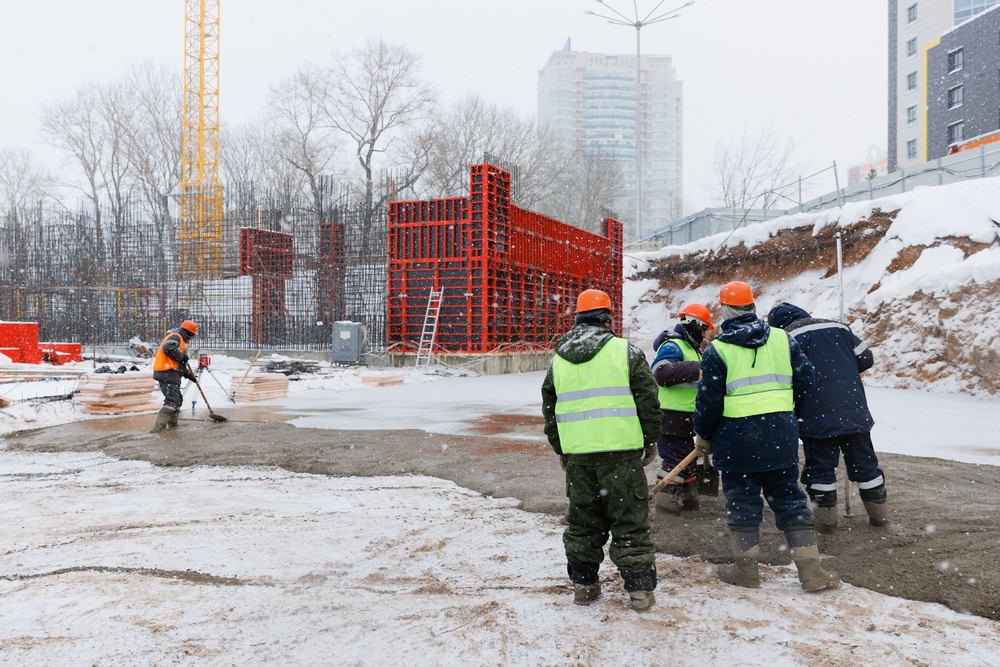
As winter descends, temperatures drop. When the cold starts to bite, construction workers in New York City face unique challenges on the job site. Employers must recognize when cold becomes a significant risk factor and actively protect construction workers from frigid temperatures.
What Determines When It Is Too Cold for Work Outside?
When is it too cold for outside construction? Cold is relative and can vary significantly depending on the region. In areas where winter weather is uncommon, temperatures hovering near freezing could be too cold for outdoor work. However, in more temperate zones, the threshold might be lower.
One of the primary reasons cold is dangerous for outdoor construction work is the physiological stress it places on the body. In cold conditions, the body must exert additional energy to keep its core temperature regulated and stable. That becomes increasingly challenging as temperatures fall below what is considered normal for a particular region and what the particular worker’s body is used to.
As wind speed increases, so does wind chill, which can speed up the rate at which heat dissipates from the body, further intensifying the cold’s impact. Consequently, both the actual temperature and wind speed play a critical role in determining when it becomes too cold to work outside safely.
What Are OSHA’s Rules for Work in Extreme Weather?
OSHA has no specific standard or rule addressing work in cold conditions. However, the Occupational Safety and Health Act (OSH Act) of 1970 makes employers responsible for shielding workers from known hazards. That includes threats presented by extreme cold or cold stress.
Specifically, employers must take appropriate preventative measures if temperatures are low enough to result in death or inflict serious physical harm to workers. Thus, even without a cold-specific directive, the OSH Act requires employers to prioritize worker safety in cold working environments.
Dangers of Construction Work in Extreme Cold
Some of the principal dangers associated with construction work in extreme cold include:
- Frostbite – This is a condition where skin and underlying tissues freeze, especially in extremities like the fingers, toes, nose, and ears.
- Hypothermia – A life-threatening condition that occurs when body temperature drops too low, hypothermia affects the brain and impairs the ability to think or move.
- Poor dexterity – Cold can stiffen fingers, making gripping tools or performing intricate tasks harder and increasing the risk of accidents.
- Ice-related falls – Wet and icy surfaces significantly increase the risk of slips, trips, and falls.
- Cold-induced asthma – Cold air can trigger asthma symptoms or exacerbate existing conditions.
- Reduced battery life – Cold can drain batteries faster, which can be problematic for tools and safety equipment that rely on them.
Claims for Injuries Related to Work in Cold Conditions
If a construction worker in New York suffers an occupational injury due to excessively cold conditions, they could have multiple options for pursuing compensation, including:
- Filing a workers’ compensation claim – This no-fault claim can provide compensation for medical expenses and a portion of lost wages, regardless of who was to blame for the injury.
- Filing a lawsuit – Section 200 of the New York Labor Law imposes a general duty on employers to ensure the health and safety of their employees. If an employer fails to provide “reasonable and adequate protection” against the cold, a worker could sue under this provision.
Talk to Our NYC Construction Injury Lawyers Today
Did you get hurt on the job while working in dangerously cold conditions? Contact The Perecman Firm, P.L.L.C., as soon as possible for a free consultation. Our NYC construction injury lawyers can help you explore your options and take the next steps.



